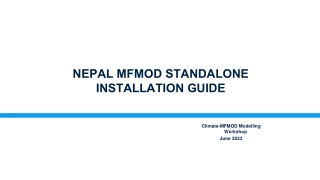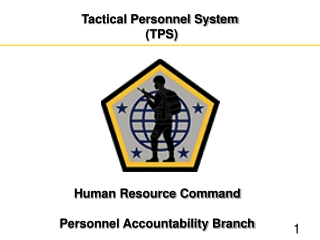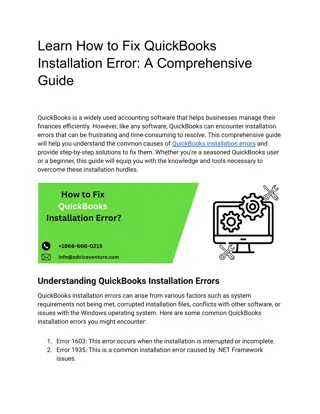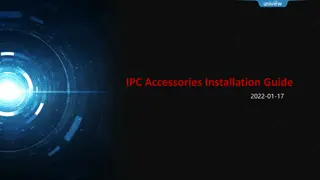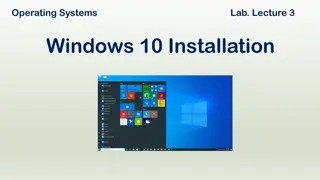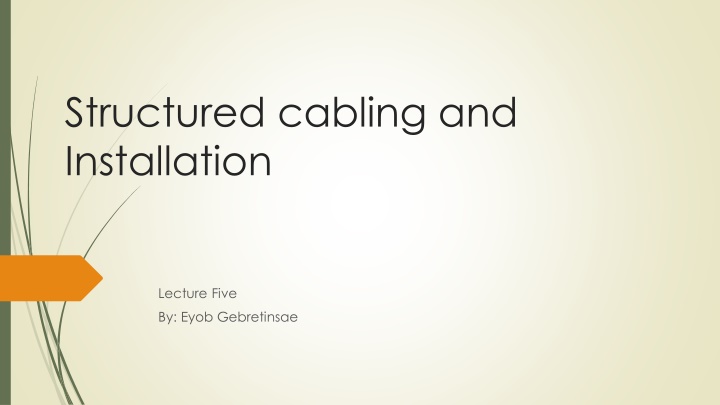
Planning for Future-Proof Structured Cabling Solutions
Proper planning and design of structured cabling infrastructure is crucial for long-term success. Consider lifespan, unified communications, media choices, and labor for a robust network setup. Future-proof your cabling system to support evolving technology needs.
Download Presentation

Please find below an Image/Link to download the presentation.
The content on the website is provided AS IS for your information and personal use only. It may not be sold, licensed, or shared on other websites without obtaining consent from the author. If you encounter any issues during the download, it is possible that the publisher has removed the file from their server.
You are allowed to download the files provided on this website for personal or commercial use, subject to the condition that they are used lawfully. All files are the property of their respective owners.
The content on the website is provided AS IS for your information and personal use only. It may not be sold, licensed, or shared on other websites without obtaining consent from the author.
E N D
Presentation Transcript
Structured cabling and Installation Lecture Five By: Eyob Gebretinsae
Structured cable Installation and installation guide lines Contents Installation Design Considerations Horizontal Cabling Vertical or Backbone cabling Fiber Cables installation guidelines Coper Cable installation guidelines
Installation Design Considerations Planning for structured cabling can be one of the biggest challenges when it comes to setting up new building projects or adding wiring to existing structures. Proper planning, design, installation, and maintenance of this infrastructure can have a positive impact on your company s day-to-day operations and can contribute to its success. The system that you plan could support new and different applications, including migrating to 40-/100GbE, even 1-TB systems.
The question is, how do you plan for the future? The first step in designing and implementing a new or upgraded network infrastructure is to step back and assess your needs. Plan on using the best cable, hardware, and components your budget can afford. Most importantly, plan for more capacity and space than you think you ll need. The following are important considerations when planning for structured cabling.
Lifespan. Consider how long you want your structured cabling system to serve your facilities. Plan on a life span of 10 20 years, with 10 years being the minimum, and 15 years being typical. While the cabling itself represents only about 5% of the total network budget, it is also the most difficult and expensive part of the network to replace, requiring extensive labor and major workplace disruption. Your cabling system should have the longest life cycle of any component in your network. Electronics have an average lifespan of five years
Unified Communications/VoIP. The question isn t if, it s when. Plan on using the best cable you can to carry your voice, data, and multimedia transmissions. Media. What media will you use? Fiber, copper, or both? The types and mixtures of cable you choose will depend on the applications, architecture, environment, and more. Carefully consider any trade-offs of price for performance. The lowest-cost cable may not be the most economical long-term choice, particularly as you migrate to 40-/100- Gbps in the future.
Labor is the most expensive part of installing new cable, so choose the best grade cable you can that will serve you for years to come as your organization grows. Usage. Consider how your network is to be used. A network in educational buildings has far different requirements than a network in healthcare facilities. Other factors that can affect network planning include peak load periods, number of ports, particular usage patterns, security, even outlet density.
Indoor Vs. Outdoor Will your cables be placed inside or outside? What type of cable is appropriate for your choice? What Kind Of Bandwidth Will You Require? This is a huge concern for businesses that are going to be transmitting a large amount of data through their networks. Consider how much capacity and speed you need now, and how much you are going to need in the future. Plan for complete coverage with as much bandwidth as possible. Remember, recabling is a very expensive proposition.
Moves, Adds, Changes and Your Furniture Locations Consider how likely it is that the cable layout in the building in question will need to be changed Where in your building will desks, conference tables, and server racks be located? How many users do you have now and how many do you anticipate adding over the next 10 years. Planning MDF and IDF Locations Make can make sure that cable runs are never too long and any changes down the line are less labor intensive Government Regulations Be sure that you are well aware of any of these regulations before you start designing your structured cabling.
Standards ANSI/TIA. State and local building codes. NEC codes. They exist for a reason and will make your life easier in the long run when it comes to performance, maintenance, upgrades, etc. If you follow the standards for distance limitations, installation, and best practices, you should get good performance and conform to all safety regulations. Also, if you are in healthcare, education, or another specialized vertical, be aware of specific standards that apply to you, such as TIA 1179 for healthcare facilities.
Documentation. Don t forget proper documentation, diagrams, labeling, color coding, and other administrative duties. Doing it right in the beginning will make your life so much easier in the future. A well-planned and documented installation will more than pay for itself by lowering long-term maintenance, eliminating problems from poor workmanship, reducing downtime, and most importantly, giving you peace of mind.
Power over Ethernet (PoE). Consider where you may need to run power over your data lines. Also consider where you want to locate networking devices, especially if it's in an area where there is no power or would be difficult to install power. PoE devices, such as security cameras, alarms, and locks, solve the problem of no power availability. Security. Plan on current and emerging data, network, and physical security systems, including PoE and wireless applications.
Physical plant Consider available space for data centers, equipment, telecommunications rooms, and cable runs. Consider any unusual physical constraints, such as power lines, EMI influences, seismic activity, or industrial activity. Make sure to factor in plenum runs, additional air ducts, suspended ceilings, etc. Redundancy. Do you need to run duplicate pathways? Pay particular attention to this if you are in healthcare, finance, industry, or education.
Total cost of ownership The lowest initial installation cost is not always the least expensive or most economical solution or The lowest bid may not necessarily be the best. Carefully consider what media you re going to use. Plan on replacing your electronic equipment two to three times over the life of the cabling system. When all totaled, these ongoing costs can actually equal or exceed the cost of your original investment.
Warranties/manufacturer support. Be aware of product warranties. What is the length of the warranty? What components does it cover? How long will the manufacturers will support the cabling?
Best Practice for Cable Pathway Design Working with key stakeholders such as architects, designers, consultants and planners, before a project commences is essential. Room Requirements for a Network Centre Design When planning a room for a network center, a network cabinet is required. The network cabinets are of a certain size, and require clearance around them to allow technicians to work on them. The size of the cabinet can be determined by the number of nodes that can accommodate by the cabinet and other components that will placed in the rack Where network centres are located? How they will be connected with the datacenter?
Labeling & certification All new cables must be scanned after installation with cable analyser and meet the requirements appropriate to the class of cable used (class D or E). How Tests should be performed after installation for permanent link certification How cabling will be labelled at both ends? All system tails, patch panel ports, network sockets should be clearly labelled by means of an appropriately secured printed label.

